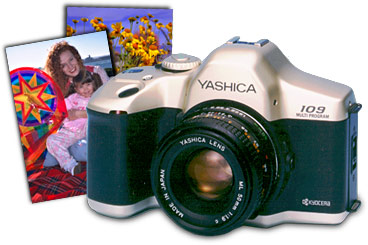

Photography Class
Bong S. Eliab
First Semester
Humanities Division
School of Arts and Sciences
Ateneo de Davao University
Syllabus | Notes | Papers | Projects
Just What Is a Camera?A camera is essentially a light-tight box with a piece of light-sensitive material inside the box on one end and a hole at the other end so light can enter. Now things start getting a little bit more complicated. We have to regulate as precisely as possible just how much light hits that light-sensitive material. This quantity of light will depend on two factors: (a) time and (b) volume. Think of turning on a faucet to fill a glass with water. You can run that faucet wide open for two seconds and fill the glass. If you run the faucet half-open for two seconds you will fill half the glass. Light's the same way. An aperture (opening) that is half open admits half as much light as one fully open for the same time duration. Thus the aperture setting is one way of controlling how much light reaches that light-sensitive material. Time is the other way of regulating this light. We do this with a shutter. In our faucet analogy, the shutter is comparable to the time the faucet is on. In today's better cameras, we can precisely control the speed of the shutter and the size of the aperture. We call the light-sensitive material film, which today consists of a acetate base with layers of light-sensitive chemicals (called the emulsion) on it. There are many kinds of films available for many purposes. The more sensitive the film is to light, the less time we need to "fill" the glass, so to speak. In other words, smaller apertures and shorter shutter speeds are necessary for extremely light-sensitive (high-speed) films. We rate films by ISO numbers. A film with an ISO of 50 is called a "slow" film, which means it needs more exposure time. Films with ISOs of 400 or greater are known as "fast" films, suitable for low-light photography. Generally, however, the higher the ISO, the less the film quality (lack of detail and color nuances). Different apertures and shutter speeds make possible many wonderful creative variations. These combinations are explained in detail elsewhere. |
Syllabus | Notes | Papers | Projects
All Rights Reserved 2001
Ateneo de Davao University
10 June 2002